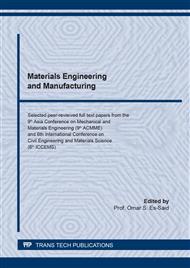p.163
p.174
p.179
p.186
p.195
p.202
p.207
p.214
p.220
Ultimate Shear Strength of Component Model of Composite Beam with Perfobond Shear Connector
Abstract:
In general, a steel beam is assembled with a concrete slab by shear connectors. The connection requires high stiffness and strength to secure the composite effect even in the ultimate state. Facing this need, perfobond shear connectors are attracting a great attention by virtue of its outstanding mechanical performance. However, the connector is subjected to the fully reversed cyclic stress between the compression and tension during an earthquake. Therefore, as presented in the earlier research addressing stud shear connectors, the concrete may originate cracks under the tensile stress; and eventually, the expected composite effect is not possibly performed. To address this concern, this research carried out a total of three fully reversed cyclic loading tests using the component model of perfobond shear connection. The parameters are the presence of reinforcing bars and concrete strength. In conclusion, it was found that perfobond shear connectors exhibit more stable mechanical behavior and capacity than stud shear connectors regardless of stress orientation due to a localized stress transfer mechanism that results in smaller cracks in the slab under a fully reversed cyclic loading.
Info:
Periodical:
Pages:
214-219
Citation:
Online since:
October 2021
Authors:
Price:
Сopyright:
© 2021 Trans Tech Publications Ltd. All Rights Reserved
Share:
Citation:


